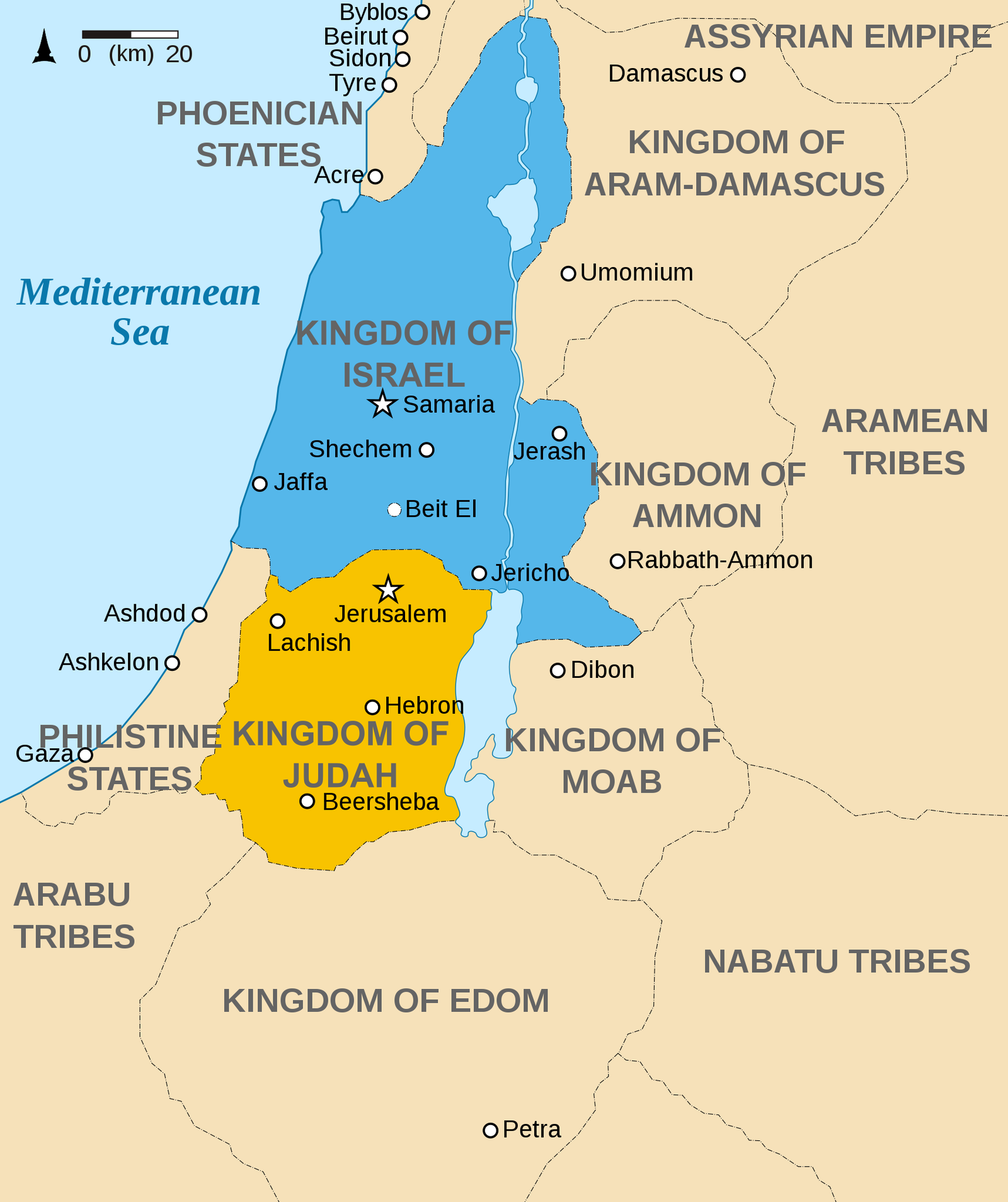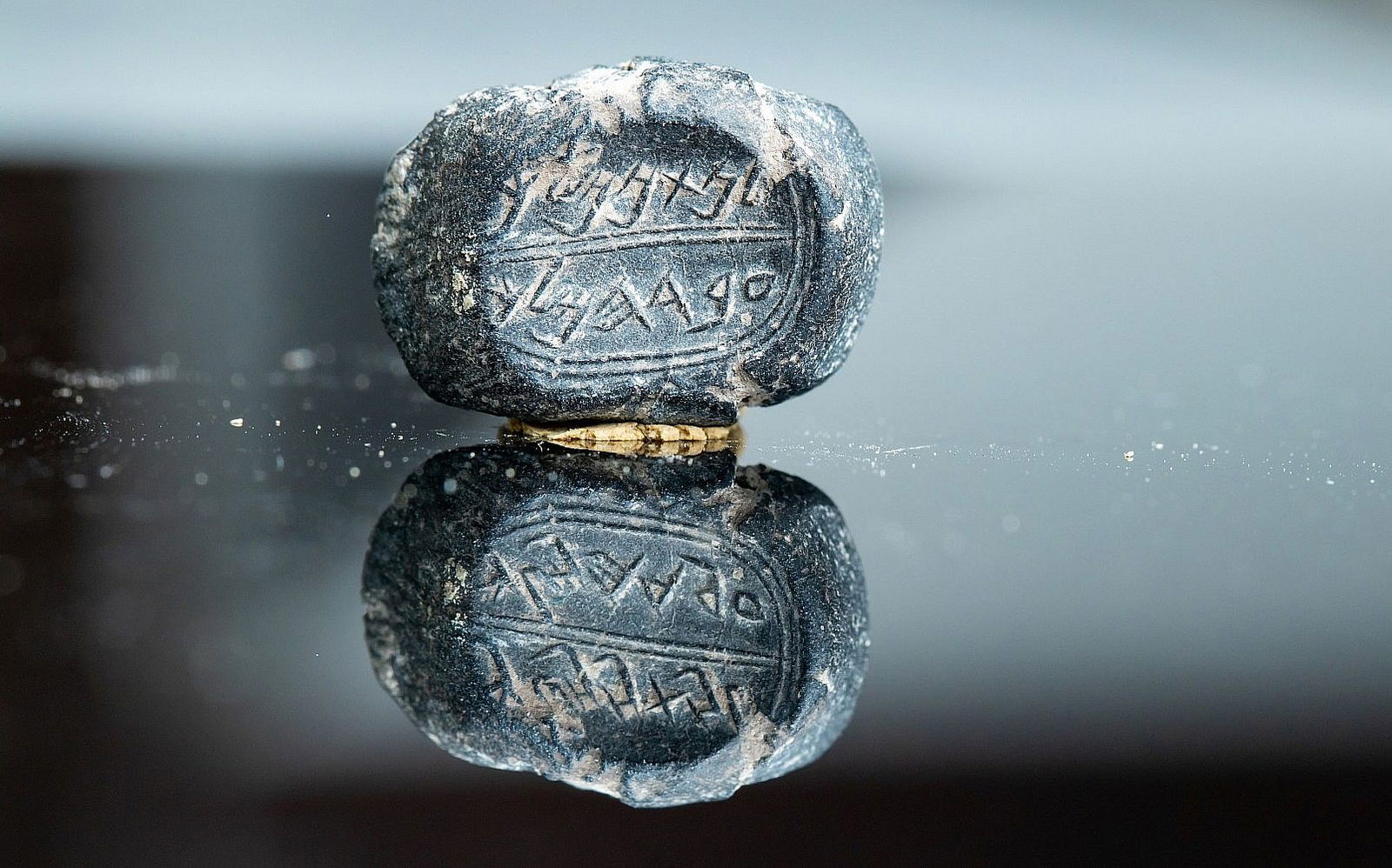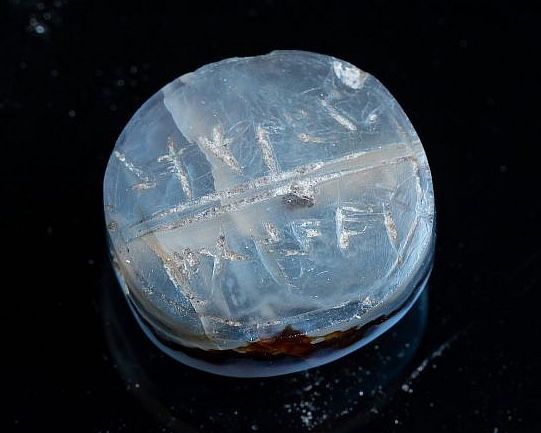A Servant of the King
The 'Natan-Melech/Eved Hamelech' bulla found in the City of David. (Eliyahu Yanai, City of David)
When I was a child, I decided I wanted to read through the books of the Kings in the Old Testament because I wanted to know more about the history of the people of Israel before Christ came in the New Testament. I read that the kingdom of Israel after King Solomon was split in two, creating a northern kingdom and a southern kingdom. Both kingdoms were ruled by different kings over many years.

Map showing the northern kingdom called Israel and the southern kingdom called Judah. Photo by Malus Catulus, CC BY-SA 3.0, via Wikimedia Commons
I remember reading about how many of these kings kept sinning against God, and I read over and over again, “And he did what was evil in the sight of the Lord,” and it made me so sad. Until! I read about King Josiah. King Josiah reigned over the southern kingdom of Judah, and he served the Lord as nobody had before or after him. This is what the Bible says about him as a king, “Before him there was no king like him, who turned to the Lord with all his heart and with all his soul and with all his might, according to all the Law of Moses, nor did any like him arise after him” (2 Kings 23:25). I decided that I wanted to obey the Lord with my whole heart like King Josiah and serve him with all my soul. King Josiah became my favorite king, and as I grew into an adult and began studying archaeology, I started to wonder if there was any evidence of Josiah or people who lived with him in Israel, and this is what I found.
Archaeologists dug up a 2,600-year-old bulla (clay seal impression) as well as an ancient seal that had biblical names on them in a place called the City of David in Jerusalem. The bulla reads, “[Belonging] to Nathan-Melek servant of the king.”1

The “[Belonging] to Natan-Melek servant of the King” bulla found in the City of David, taken by Eliyahu Yanai, City of David
This is very exciting because we read about a Nathan-Melek who served none other than King Josiah himself (2 Kings 23:11). Now in archaeology, we cannot say if this is the exact same Nathan-Melek mentioned in Scripture, but the age of the bulla and the name on it confirm that the Bible records actual people who lived in real places during real events. Another seal that was found in the same location reads, “[Belonging] to Ikkar son of Matanyahu.”2

The “[Belonging] to Ikkar son of Matanyahu” seal found in the City of David, taken by Eliyahu Yanai, City of David
The name Matanyahu is also used in the Bible (2 Kings 24:17; 1 Chronicles 9:15, 25:4, 25:16), but it is spelled Mattaniah (sometimes Bible names look and sound different when we find them in archaeology, but this is because we use English, and the biblical writers did not). Both artifacts were found in a building that was most likely destroyed by King Nebuchadnezzar (mentioned in the book of Daniel) in the sixth century.3
It is exciting to see archaeology catching up with what the Bible already told us happened in the past. Who knows what we will find next!
Footnotes
- Bryan Windle, “Biblical Names Discovered on a Seal and Bulla in Jerusalem,” Associates for Biblical Research, April 5, 2019, https://biblearchaeology.org/current-events-list/4426-biblical-names-discovered-on-a-seal-and-bulla-in-jerusalem.
- Windle, “Biblical Names Discovered on a Seal.”
- Windle, “Biblical Names Discovered on a Seal.”
- © 2025 Answers in Genesis
- Privacy Policy
- Contact
- About
